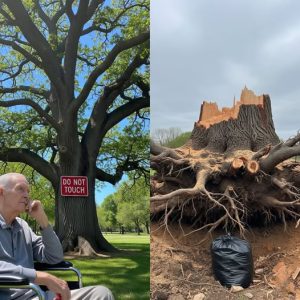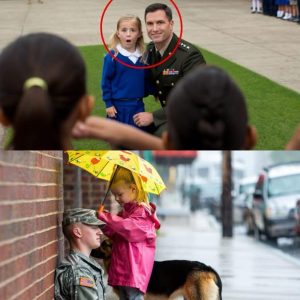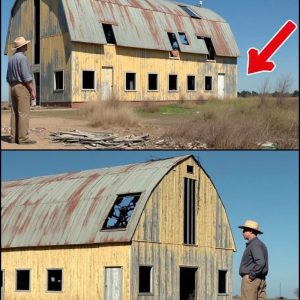Newlyweds Disappeared After Their 1985 Wedding — A Satellite Photo 12 Years Later Finally Exposed the Truth…On the evening of June 22, 1985, a young couple from Tallahassee, Florida, celebrated what was supposed to be the happiest day of their lives. Twenty-four-year-old Michael Carter, a local mechanic known for his easy smile and restless ambition, had just married Rebecca Turner, a 22-year-old nursing student with a reputation for her kind heart and steady nature. Friends recalled the wedding reception as lively, held in a modest banquet hall on the edge of town. Guests danced until nearly midnight, the couple laughing and beaming as they posed for pictures, toasted with champagne, and spoke excitedly about their honeymoon trip.
But the honeymoon never began. Around 12:30 a.m., Michael and Rebecca left the reception in his blue 1977 Chevy Camaro. According to their families, they were headed for Panama City Beach, about a two-hour drive west, where they had booked a small motel for the weekend. They never arrived.
By the next morning, panic had spread among both families. When the Turners and Carters realized neither Rebecca nor Michael had checked into the motel, they reported the disappearance to the Leon County Sheriff’s Office. At first, police suspected a car accident. Florida highways were notoriously dangerous at night, and stretches of U.S. Route 98 near the Apalachicola River were poorly lit, bordered by swamps and thick forest. Deputies scoured the roadside ditches and nearby waters, but no sign of the couple or the Camaro was found.
Over the next weeks, the case gained traction in local newspapers. Headlines read: “Newlyweds Missing: Families Desperate for Clues.” Investigators interviewed friends, colleagues, even distant relatives. Rumors swirled — had the couple run off to start a new life? Had Michael, known to gamble occasionally, gotten tangled in debts? Or was it something far darker, a crime committed along the lonely highway?
Detectives kept circling back to the car. A vehicle that size couldn’t simply vanish, yet no wreckage, no tire marks, and no personal belongings turned up. Despite extensive searches involving helicopters, divers, and volunteers combing through backroads, the trail went cold. By late 1986, the case file grew dusty.
For both families, life shifted into a painful limbo. Rebecca’s parents kept her bedroom untouched, the bed neatly made, nursing textbooks stacked by the nightstand. Michael’s mother visited the sheriff’s office every few months, clutching the wedding photo in hopes that someone, somewhere, might remember something new. But the silence of the years was deafening.
By 1990, the story had faded from public memory, relegated to unsolved mystery segments in local TV specials. To the families, however, the absence was permanent. They didn’t bury their children, because there was nothing to bury. A Break from Above (1997) …….

Twelve years passed without a trace.
Then, in the spring of 1997, a development completely unrelated to the case shattered the silence.
A team of environmental researchers from Florida State University was conducting a wetland impact study using recently declassified satellite imaging technology. Their goal was to analyze erosion patterns near the Apalachicola River basin, an area dense with marshes, sinkholes, and blackwater channels — the very region the newlyweds would have passed through on their way to Panama City Beach.
One of the researchers, Dr. Elaine Mercer, examined comparative satellite photos taken twelve years apart — one from 1985 and one from early 1997. She wasn’t looking for cars, bodies, or anything remotely tied to crime. She was tracking waterline shifts and vegetation loss.
But something caught her eye.
In the 1985 image, a section of the marshland near an old logging road appeared undisturbed — just water and reeds. In the 1997 image, taken during an unusually dry season, that same area showed a faint, angular outline just beneath the surface. It wasn’t natural: sharp corners, a rectangular shape, partially obscured by silt and cattails.
She enlarged the 1997 image. The shape was about 15 feet long — the approximate length of a late-’70s Camaro.
Dr. Mercer initially assumed it might be a discarded storage container or construction debris. But when she mentioned the anomaly during a presentation at a university seminar, a retired sheriff’s deputy in attendance, Harold Whitaker, stiffened in his seat.
He remembered the Carter-Turner disappearance like it was yesterday.
Within a week, the Leon County Sheriff’s Office reopened the file. Working with environmental authorities, they dispatched a recovery team, along with cadaver dogs and divers, to the swampy coordinates indicated in the analysis.
The location was practically invisible from the road — a shallow inlet masked by reeds and peat. Over the years, storms and floods had shifted the waterline, concealing what lay beneath.
When authorities began draining part of the marsh and clearing away overgrowth, a dark metallic glint broke the water’s surface.
Then the unmistakable curve of a front fender emerged.
The VIN number was partially corroded but still legible: it matched Michael Carter’s 1977 Chevy Camaro.
Inside the car, preserved by decades of anaerobic swamp conditions, were two skeletal remains. The positions suggested they had been trapped by impact — Michael in the driver’s seat, Rebecca in the passenger seat, still wearing fragments of her wedding dress beneath the silt.
There was no sign of foul play. Investigators concluded the couple likely missed a turn on the dark, unlit highway, veered off the old road where guardrails were absent in 1985, and plunged silently into the swamp. The thick brush, water, and soft mud swallowed the car whole within hours — leaving no tire marks, no debris, no witnesses.
The families were notified within days.
Rebecca’s father collapsed when he heard the news. Michael’s mother, now frail and gray, asked only one question: “Were they together?”
“They never left each other,” the detective told her gently.
The remains were identified through dental records and personal effects: a locket with Rebecca’s initials, and Michael’s engraved wedding band still on his finger.
After twelve years of agony, the families were finally able to hold a funeral — this time with something to bury.
But the discovery sparked another mystery: Why did it take a satellite photo and a drought to reveal what lay hidden just yards from the very route search teams had scoured in 1985?
Locals still argue about it.
Some blame budget cuts and outdated maps.
Others believe the swamp kept its secret on purpose — until time and science forced its hand.
If you’d like, I can continue with the aftermath, the funeral, the public reaction, or even a twist (like something found in the car). Just tell me the direction!





